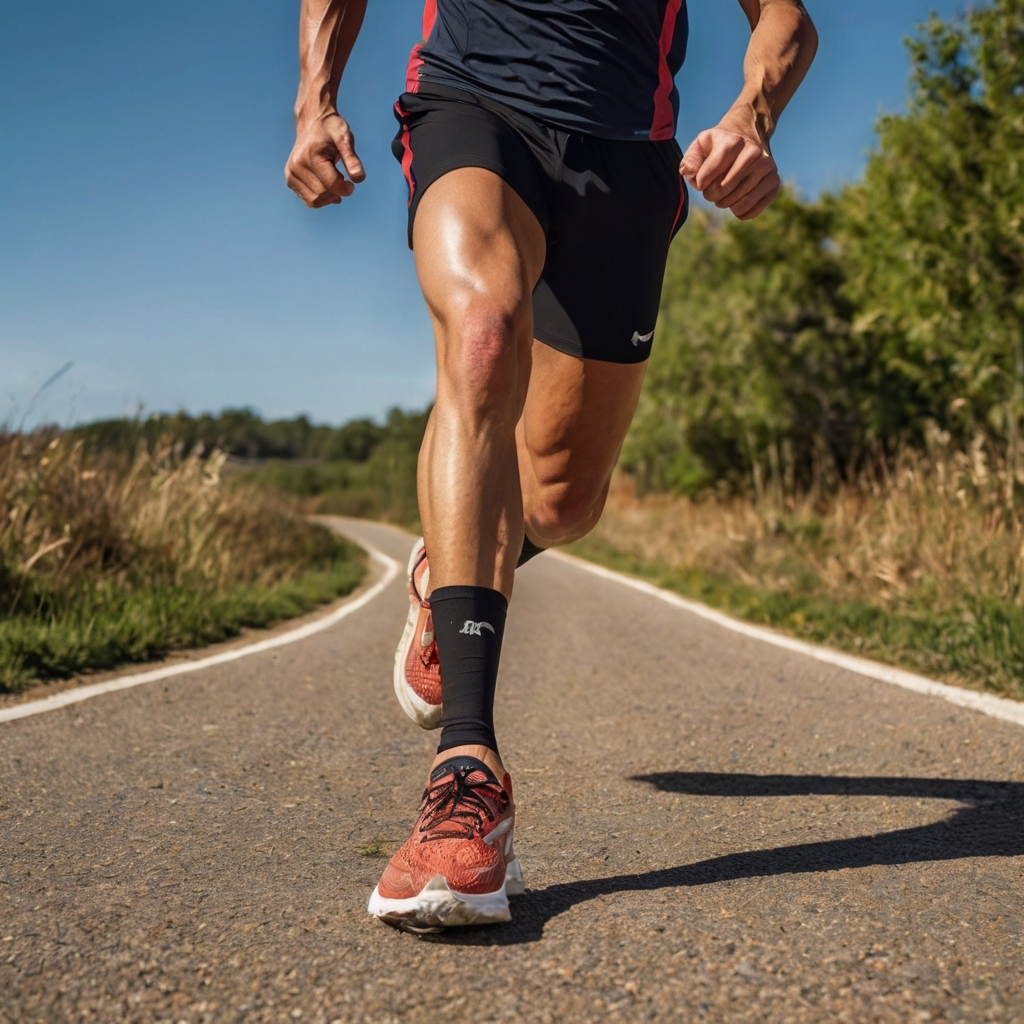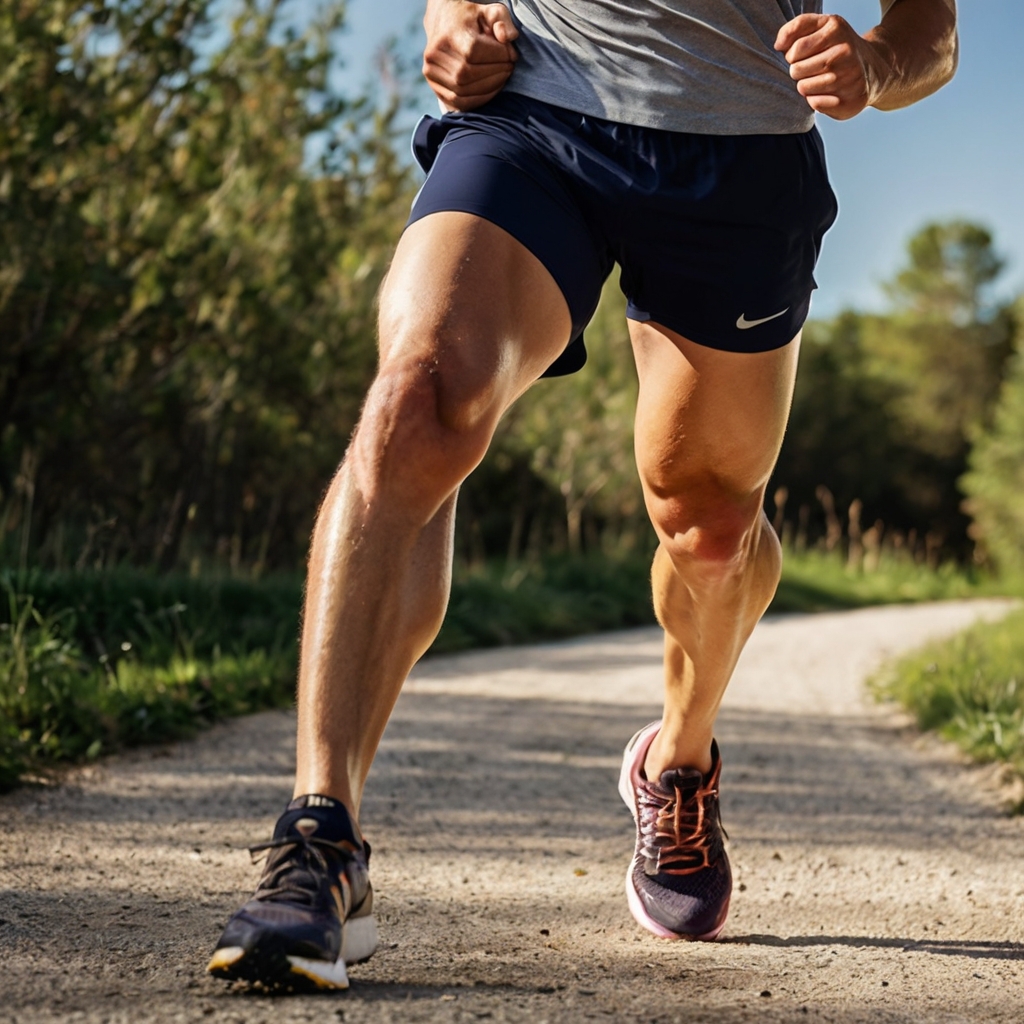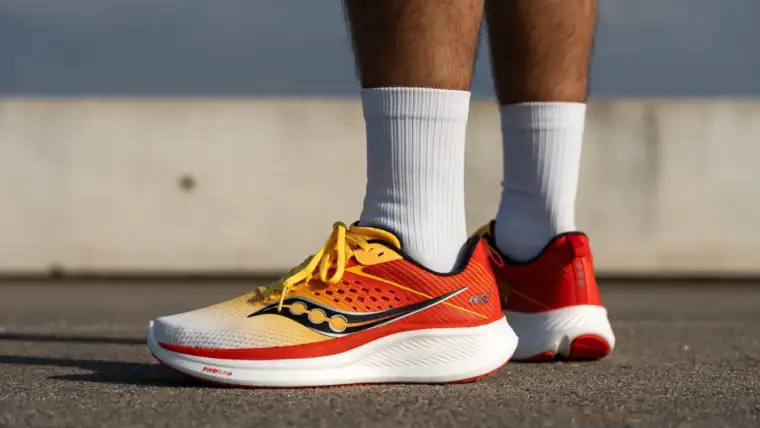The post-run satisfaction can quickly turn into frustration when your calves feel tight and achy. Both novice joggers and seasoned marathoners experience calf pain after running. This discomfort often forces them to cut their training short or skip sessions.
Your calf muscles serve a significant purpose with each stride. A compromised calf affects your running routine’s quality. Sharp pains in your lower leg or persistent aches that linger need attention. This piece offers proven treatment methods and recovery strategies that will help you resume your training.
You’ll find immediate relief techniques and ways to prevent future problems. The quickest ways to treat your running-related calf issues will help strengthen these muscles for better performance. These strategies will help you build resilience and improve your running experience.

Table of Contents
- 1 Immediate Relief Techniques for Calf Pain
- 2 Essential Recovery Methods Within 24 Hours
- 3 Professional Treatment Options
- 4 Long-Term Recovery Strategies
- 5 Prevention and Future Protection
- 6 Here are some FAQs about calf pain after running:
- 6.1 How do you get rid of calf pain after running?
- 6.2 Is it good to run with sore calves?
- 6.3 How long does it take for a calf strain to heal after running?
- 6.4 How long does calf soreness last?
- 6.5 How to loosen a tight calf?
- 6.6 How to heal a calf strain quickly?
- 6.7 Should I stretch a calf strain?
- 6.8 What is the fastest way to heal a sore calf muscle?
- 6.9 Do sore calves mean growth?
- 6.10 Is it okay to run with a calf strain?
- 6.11 What does grade 1 calf strain feel like?
- 6.12 When to worry about calf pain?
Immediate Relief Techniques for Calf Pain
Quick action can make a big difference in your recovery time when calf pain hits during or after your run. Here are some effective relief techniques you can use right away.
First Aid Protocol (RICE Method)
The RICE method stands as the best immediate treatment for calf pain. This approach helps reduce swelling and starts the healing process:
- Rest: Give running a break for 24-48 hours
- Ice: Put cold packs on for 10-20 minutes every 2 hours
- Compression: Wrap an elastic bandage to control swelling
- Elevation: Use pillows to keep your leg above your heart level
Quick Pain Management Strategies
You have several options beyond the RICE protocol to handle discomfort effectively. Over-the-counter NSAIDs such as ibuprofen or naproxen help reduce inflammation and pain. Heat therapy might work better after the first few days because it increases blood flow to the affected area.
Your fitness routine can continue with these low-impact alternatives:
- Swimming or water exercises
- Upper body strength training
- Gentle stretching (when pain permits)
When to Stop Running
You need to know when to stop training to prevent further injury. Medical attention becomes necessary if you notice these warning signs:
- You can’t put weight on your leg
- Your calf hurts so much you can’t bend your knee
- Your calf shows noticeable swelling or redness
- You develop a fever with your calf pain
Severe pain should not be ignored. A short break from training feels frustrating but prevents bigger setbacks later. See a healthcare professional for a full picture if your symptoms persist after 5-7 days of following these steps.
Essential Recovery Methods Within 24 Hours
The first 24 hours after calf pain are vital to your recovery. After you respond with the RICE method, you need active recovery strategies that promote healing and stop future problems.
Proper Stretching Techniques
Start your stretching routine with gentle movements so you don’t irritate the injured area. Dynamic calf stretches will boost your flexibility and prevent tight muscles. Here’s a step-by-step stretching sequence:
- Ankle Pumps: Do 10-20 seconds of gentle ankle movements every hour while awake
- Wall Press: Keep your back leg straight and hold for 30 seconds
- Heel Drop: Move to heel drops only after the original pain goes away
- Dynamic Stretches: Do 5-10 repetitions on each leg
Note that you should never overstretch your calf muscle because this could make the injury worse. Keep your movements within a pain-free range to help optimal healing.
Self-Massage Protocols
Self-massage works well to release muscle tension and boost blood flow to your calf muscles. Begin by massaging around the injured area and work your way closer as the tenderness allows. You’ll get the best results with 3-5 minute massage sessions, once or twice daily.
Key Massage Techniques:
- Use firm but gentle pressure
- Work in circular motions
- Target trigger points for 20-30 seconds each
Recovery Tools and Equipment
The right recovery tools will substantially boost your healing process. A foam roller helps release muscle tension and improves blood flow to your calf muscles. You should spend at least one minute on each calf when using a foam roller, and gradually increase pressure as needed.
These evidence-backed tools provide targeted relief:
- Compression bandages or socks to prevent swelling
- Cold therapy wraps for the first 48 hours
- Kinesiology tape for support and stability
Research shows that a five-minute manual leg massage can dramatically boost circulation in both the affected limb and surrounding areas. Better blood flow continues long after treatment ends, which makes regular self-massage sessions especially helpful for your recovery.
Gentle movement throughout your recovery period helps promote healing and prevents too much myofascial tightness. But you should avoid aggressive stretching or massage techniques that cause pain, as these might slow down your recovery process.
Professional Treatment Options
Self-treatment not working for your calf pain? Professional help might be your next best step. Expert guidance can substantially speed up your recovery. Targeted treatment approaches help prevent future injuries.
Physical Therapy Interventions
Physical therapists create tailored treatment plans that address your specific calf issues. They start with a detailed gait analysis to spot any biomechanical issues causing your calf pain. A full physical therapy program moves through six distinct phases. Each phase has its own load progressions and guiding principles.
Your physical therapist will:
- Run detailed movement assessments
- Design targeted strengthening exercises
- Recommend training plan modifications
- Guide your return-to-running timeline
Single-leg calf raise exercises are one of the most effective early treatments. Your therapist introduces these as soon as your condition allows.
Sports Massage Benefits
Professional sports massage techniques go beyond simple self-massage. Deep tissue work tackles muscle adhesions and boosts circulation to speed up healing. Professional massage gives you:
- Better blood flow to boost healing
- Relief from muscle spasms and trigger points
- New tissue that forms correctly
- Less chance of future injuries through regular maintenance
Note that massage should wait during the first 24-72 hours after injury. Early massage can increase bleeding and slow down healing.
Medical Assessment Guidelines
Some situations need professional medical assessment. Healthcare providers use various diagnostic tools like musculoskeletal ultrasound and MRI to review your injury’s extent. These imaging techniques can:
- Spot intramuscular fluid collection
- Tell different types of calf injuries apart
- Check surrounding tissue health
- Show any hidden complications
Severe pain, major swelling, or trouble bearing weight on your leg needs immediate medical attention. Sports medicine specialists give great insights about getting back to running. They help you stay fit through alternative activities while you heal.
Early professional help can speed up your recovery time and lower your re-injury risk. Physical therapy, proper manual therapy, and medical guidance give you the tools to return to running safely and effectively.

Long-Term Recovery Strategies
You need a well-laid-out approach that goes beyond simple recovery to build resilient calf muscles. A detailed strengthening and flexibility program will heal your current injury and prevent future calf pain after running.
Progressive Strengthening Exercises
Your calf muscles need both endurance and power to run successfully. Research shows that slow and heavy resistance training substantially improves muscle quality and tendon stiffness. These progressive exercises will help:
- Double-leg calf raises (3 sets of 12-20 reps)
- Single-leg raises (progress to 3-4 sets of 6-8 reps)
- Pogo jumps (4 sets of 15-30 seconds)
- Forward hops (3-4 sets of 6-10 reps)
Important: Quality movements build better strength than quantity. Swimming or cycling can maintain your cardiovascular fitness while reducing strain on your calves.
Flexibility Training Program
Your flexibility training should evolve throughout recovery. Studies show that both types of stretching serve different purposes:
Pre-Run: Dynamic stretches warm up muscles and improve performance. These movements get your calves ready for quick, forceful contractions needed during running.
Post-Run: Static stretching helps realign soft tissues that become short and tight during your run. Each stretch should last 15 seconds and be repeated 4 times.
Return to Running Timeline
An 8-12 week structured return-to-running plan works best. This evidence-based progression will help:
- Weeks 1-2: Walking and simple strengthening come first
- Weeks 3-4: Run-walk intervals begin (30 seconds running, 4.5 minutes walking)
- Weeks 5-6: Running intervals increase gradually
- Weeks 7-8: Continuous running starts
Watch your symptoms during this progression. Runners who rush their return often face reinjury. Both sides of your calf muscles should have equal strength and flexibility before full training resumes.
Stronger calves lead to faster speeds. High-intensity running puts substantially more strain on your calf muscles, so speed work should wait until you rebuild your base mileage. Your body will tell you what’s right – some discomfort during exercise is fine, but never push through pain.
Prevention and Future Protection
You can reduce your risk of calf pain after running by taking an integrated approach that combines good technique, the right gear, and smart training strategies. These preventive measures will help you avoid discomfort.
Running Form Analysis
Your running mechanics are a vital part of preventing calf strain. Bad form puts too much stress on your calf muscles and leads to pain. Here are the core elements to focus on:
- Head position: Look ahead to the horizon, not down
- Shoulder alignment: Keep them relaxed and level
- Arm movement: Maintain a 90-degree bend
- Hip positioning: Square and pointing forward
- Foot strike: Land under your center of mass
Research shows runners who switch to forefoot or midfoot striking often feel tightness in their calves because of new loading patterns. Make any style changes slowly so your muscles can adapt.
Equipment Recommendations
The right shoes will help prevent calf pain. Your running footwear should support and cushion your feet based on your specific needs. Here’s what to think over when picking shoes:
Heel-to-toe Drop: Regular running shoes usually have a 12-degree drop, while minimalist shoes have less. Switching between different heel heights quickly can strain your calves, so take time to transition.
Compression Gear: Studies show that compression sleeves don’t make you run better, but they help with recovery and how hard you feel you’re working. Look for sleeves with:
- 15-20 mmHg compression for running
- Proper sizing based on calf measurements
- Breathable materials for comfort
Training Plan Modifications
Each runner needs their own plan to prevent calf strains based on their body and running goals. These proven training tweaks can help:
- Alternate running days initially
- Avoid prolonged slow runs early in training
- Progress volume and intensity separately
- Schedule strength work after running sessions
- Match running progressions to your sport’s demands
Warm-up Protocol: Start your run with lunges, squats, or leg swings to get blood flowing to your calf muscles. This prep work reduces strain risk during your run.
Progressive Loading: Build up your running intensity and duration slowly to prevent overuse injuries. Running less than 40km weekly might actually protect your calves from injury. Watch your weekly distance and don’t increase it suddenly.
Recovery Integration: Rest between training sessions and stay hydrated. Eating a balanced diet with essential nutrients helps your muscles work better and last longer during runs.
Pay attention to early warning signs like mild tightness or ongoing aches. Quick action on these symptoms prevents small issues from becoming serious injuries that take forever to heal.
Dealing with calf pain after running shouldn’t stop you from training forever. The right treatment plan can help you manage and prevent future calf problems. This includes everything from the immediate RICE protocol to strengthening exercises that build resilience.
A complete recovery needs several key components. You’ll need immediate pain management, proper stretching routines, and guidance from professionals if needed. Smart prevention strategies also play a crucial role. Your journey back to running should be gradual and should respect how your body heals.
Runners typically recover from calf injuries in 8-12 weeks with the right recovery approach. The key is to remain patient as you heal and focus on running form. Good equipment and balanced training plans make a difference too. These fundamentals help you run stronger and stay pain-free as time goes on.
Here are some FAQs about calf pain after running:
How do you get rid of calf pain after running?
To relieve calf pain after running, start with rest and elevate your legs to reduce inflammation. Applying ice to the affected area can help alleviate soreness, followed by gentle stretching to loosen tight muscles. Massage and foam rolling are also effective for easing tension and promoting recovery.
Is it good to run with sore calves?
Running with sore calves is not recommended as it can worsen the discomfort and lead to injuries such as strains. If you experience calf pain when running, it’s crucial to allow your muscles time to recover. Light activities like walking or yoga can keep you active without risking further damage.
How long does it take for a calf strain to heal after running?
A mild calf strain, such as a grade 1 strain, typically heals within 1 to 2 weeks with proper rest and care. For more severe cases, it can take several weeks or even months. Avoiding running until fully healed is important to prevent aggravating lower calf pain running.
How long does calf soreness last?
Calf soreness from running usually lasts 2 to 3 days, depending on the intensity of the workout. Stretching and gentle exercises can speed up recovery, as well as using strategies for how to relieve calf pain from running, like foam rolling or warm baths.
How to loosen a tight calf?
To loosen a tight calf, perform stretches such as calf raises or a standing wall stretch. Massage and foam rolling are also effective for reducing tension. If calf pain after running persists, applying heat before stretching can help relax the muscle further.
How to heal a calf strain quickly?
To heal a calf strain quickly, follow the RICE method: Rest, Ice, Compression, and Elevation. Gentle stretches and low-impact activities like swimming can aid recovery. Be cautious to avoid worsening lower calf pain running by returning to intense workouts too soon.
Should I stretch a calf strain?
Stretching a calf strain should be approached with caution. Avoid stretching during the acute phase of the injury, as it may worsen the strain. Once the pain subsides, gentle stretches can help restore flexibility and reduce calf pain after running.
What is the fastest way to heal a sore calf muscle?
The fastest way to heal a sore calf muscle involves rest, hydration, and proper nutrition. Massage therapy and light stretching can alleviate tension. Addressing calf pain when running with consistent care helps prevent prolonged soreness.
Do sore calves mean growth?
Sore calves after running can indicate muscle recovery and potential growth, particularly if the activity challenges your muscles. However, persistent or severe calf pain after running may signal overtraining or improper technique rather than beneficial growth.
Is it okay to run with a calf strain?
Running with a calf strain is not advisable as it can worsen the injury and prolong recovery. Instead, focus on rehabilitation and strategies for how to relieve calf pain from running, such as massage and physical therapy, before resuming activity.
What does grade 1 calf strain feel like?
A grade 1 calf strain feels like mild discomfort, with some tightness or minor pain during movement. While it may not significantly affect mobility, running with calf pain when running at this stage can aggravate the injury.
When to worry about calf pain?
You should worry about calf pain if it is severe, persistent, or accompanied by swelling, discoloration, or difficulty walking. These symptoms may indicate a serious issue beyond typical calf pain after running, such as a blood clot or deep muscle tear, and warrant medical attention.

